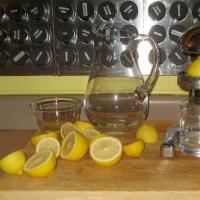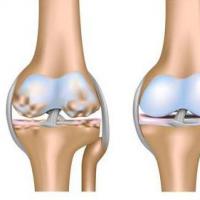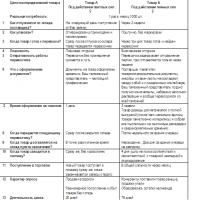Ceiling plinth or wallpaper. What to glue first - wallpaper or ceiling plinth: repair technology, expert advice. The procedure for repairing the premises
When undertaking renovation work on a house, many owners are at a loss. On initial stage and during the process itself many questions arise, especially during the period of internal finishing works. To make work easier and streamline all actions, you should develop a plan in which each stage is clearly distributed. It will help you avoid making mistakes and save time, nerves and money.

Finishing stages
So, when starting to decorate the premises, it is worth familiarizing yourself with the sequence in which the work should be carried out. As stated earlier, such an approach will help to complete the repair quickly enough and avoid various shortcomings, and, consequently, their correction.

Main finishing stages:
- The main direction of work is from top to bottom. In other words, the standard practice is to finish the ceiling first, then the walls, and finally the floor. This unusual principle serves to preserve ready-made parts of the room from damage during processing and installation of other areas.
- If before laying the finishing flooring floor screed is required, then do it first. A screed is an intermediate layer that serves as a base for the floor covering, adding rigidity to it, and hiding communications. The better it is made, the longer the coating will last. Screeds vary in composition, method of adhesion and installation, as well as purpose.
- You can level the walls using plaster. Depending on the original condition of the walls, one or more layers may be needed. Before plastering, the walls must be primed to improve the condition of the surface and subsequently the paint will adhere better.
- Finally, at the end of preparing the walls, they are puttied. All uneven areas and communication points are carefully sealed. The walls are prepared for finishing.



- Installation of door frames. The door can be installed immediately and covered with thick polyethylene to protect it from dirt and mechanical damage.
- Cover the walls with wallpaper;
- Laying finishing flooring (laminate, linoleum, parquet).
- Fastening ceiling plinths, decorative elements, switches, sockets and trim.



Repair work should begin from the furthest rooms and move towards the exit. The finishing of the corridor and hallway is carried out at the very end. All this will prevent dirt and dust from getting into the finished rooms, as well as damage to fresh coatings.
Having finished one room, the door leading into it is closed and curtained with thick plastic film. This will protect clean Decoration Materials from dirt, dust, paint or plaster.


FAQ
Some of the most frequently asked questions regarding interior finishing work.
What comes first, doors or wallpaper?
Put interior doors This can be done both before and after wallpapering. The main thing is not to combine these two works and not to carry them out at the same time. When wallpaper is glued, moisture collects in the room and remains at a high level for up to three days.
The canvases, door frames, and decorative strips swell and increase by about five centimeters. Simultaneous installation of the door will lead to the fact that subsequently, after drying, there will be a large gap between the leaf and the frame. The door lock is also likely to break.

Installation of an interior door
- Fine: dust generated during door installation will not settle on top of the wallpaper.
- Badly: you will have to spend time and carefully trim, and then tuck the edges of the canvas behind the decorative strip (platband).
- Fine: During the installation of the door, you can hide all the errors in the plastering work.
- Badly: if the dimensions of the doorway are not maintained, and at the time of pasting the wallpaper was cut along the opening, then the platband may not close the resulting gaps.


When to glue ceiling plinth?
Ceiling plinth is a decorative element that serves to delimit and hide the seams between the ceiling and walls.
Ceiling plinths include:
- baguettes;
- cornices;
- curbs;
- fillets.
Their task is not only to hide seams and transitions between the wall and the ceiling, but also to prevent the formation of cracks.



You can glue the baseboards before and after wallpapering. However, it would be more appropriate to attach them directly to the wallpaper.
All surfaces must be leveled using putty. When it is planned to paint the fillet, this is done immediately after painting the ceiling, before it dries. Otherwise there will be marks between them.
Without painting the baseboards, after waiting until the ceiling is completely dry, you should cover the joints with tape, which will protect the ceiling from glue, and fasten the baseboards. Only then are the walls painted or pasted over, adjusting the edges of the canvas. If you later need to change the wallpaper without touching the baseboard, you can easily remove it. Therefore, it is correct to stick it first ceiling plinth.
If the plinth is glued on top of the wallpaper, then in this case you will have to painstakingly cut everything off or replace it completely, along with the plinth.



When is it better to stretch the ceiling?
Stretch ceilings are a specific product, which makes it possible to install them at the final stage of finishing work. During stretching there is practically no dirt and the likelihood of damaging the finished wall and floor covering is very small. However, experts advise hiring professionals to get quick and high-quality results.
In this case, the top-down principle does not work. It is intended for predominantly standard and conventional repair work.

Ceiling tiles or wallpaper first?
It's best to stick it first ceiling tiles. In order not to stain or damage the wallpaper in the future, since paint, whitewash, glue and similar substances leave practically impossible to clean marks on them.

Floor or wallpaper: which comes first?
Preparation. The walls need to be prepared only after the floor. The debris is removed and is ready for installation of the final flooring. It is laid at the end of the repair work. Before this, the base is covered with film, so that later traces of plaster can be easily removed.
Laying. All wallpaper is pasted before the linoleum is laid; the wooden floor should also be sanded at the end. However, some craftsmen believe that wallpapering is done after laying the floor and attaching the baseboards. This is due to the fact that the wall decoration can be replaced at any time without touching the baseboards.


What's next, decorative stone or wallpaper?
It also doesn’t matter what you glue first. Basically everything depends on the professionalism of the performer.
If pasted at the beginning decorative rock, then the wallpaper is simply adjusted and trimmed in the areas where it overlaps the stone. Even if there is excess damp fabric left, it will dry and the joint will be invisible. The wallpaper is cut with a painting knife with a thin blade. They are pressed tightly against the stone with a spatula and cut along its edge with a knife. The spatula holds the wet wallpaper and prevents it from tearing.
You can also stick a decorative stone on top of the wallpaper. However, you need to work carefully so as not to stain them with glue. To prevent this, you can outline the boundaries of the future fastening in advance, and stick masking tape on the wallpaper. When finished, the tape is removed and the canvas remains clean.


When is the air conditioner installed?
It is more correct to begin installing the air conditioner before pasting the walls or covering them with plasterboard. Communications connecting two blocks (internal and external) are hidden in the walls. At the same time, the outdoor unit is installed, thereby completing the most dirty part work.
Upon completion of the interior finishing, they install indoor unit. Its installation takes about an hour, and after that a test run is carried out and the operation of the air conditioner is checked.


Photo wallpaper or wallpaper first?
Initially, it is better to stick the wallpaper, then, joining it, stick the photo wallpaper and again the wallpaper strips. However, in order for the drawing to lay flat and not beveled anywhere, it is necessary to mark the vertical. The vertical is the standard by which the wall is aligned. It is useful for uneven and bumpy walls. This is not necessary, but will help keep the pattern even.

Examples in the interior
To accurately understand the progress of the work, let’s look at it using the example of finishing a kitchen.
It is necessary to decide on the layout of the room and the interior. You can come up with the interior yourself or select from an already finished works available on the Internet.
Next, the so-called “zones” are designed, to which they are already selected necessary materials. The kitchen should have two “zones” - a working one, where food is prepared, and a dining area. They are usually separated by different facing materials. Work area decorated with tiles and the dining room with wallpaper, thus creating a cozy atmosphere. Of course, this is an approximate standardized solution.

Tsugunov Anton Valerievich
Reading time: 4 minutes
The final stage of finishing a room requires special care and accuracy from the master, since any error will be clearly visible. The junction between the wall and the ceiling is a difficult area to work with, especially if there are uneven surfaces. The use of fillets makes the task easier and makes the transition from plane to plane more aesthetically pleasing. They also go well with wallpaper, complementing each other favorably. But what should you glue first: wallpaper or ceiling plinth?
When can a fillet be attached to wallpaper?
The ceiling plinth performs decorative and masking functions: with its help, some unevenness of the ceiling is hidden. This opportunity is of great value to home handyman, because creating a perfectly flat surface is not always possible. A crooked ceiling can ruin the overall appearance of a room even with perfectly aligned walls.
To understand whether fillets can be glued to wallpaper, you need to study the types of products produced and some physical characteristics– weight, material of manufacture, width. To create such decorative elements the following are used:
- expanded polystyrene;
- Styrofoam;
- polyurethane;
- plastic;
- natural and artificial stone;
- tree;
- ceramics;
- gypsum.
You can glue skirting boards to wallpaper when the canvas is able to withstand their weight for a long time. Therefore, it is better to immediately exclude massive products and consider only light options from all varieties. The easiest way is to use baguettes made of polystyrene foam and polyurethane.
Important! Most often, putty is used to install skirting boards on the ceiling, but they need to be attached to wallpaper with universal transparent glue, which sets quickly and does not soak the canvas. “Liquid Nails”, “Dragon”, “Moment” are suitable.
The advantage of installing fillets on top of the wallpaper is the additional fastening of the joints of the strips where they most often come off - under the ceiling.
One of the disadvantages is a technical point: if decorative elements require painting, puttying or varnishing, then you need to think about protecting the pasted wallpaper from dirt.
Important! If you decide to use large-relief wallpaper, then you should immediately abandon gluing a frieze on top of it: the fastening will be unreliable, the plinth may move in waves, and gaps will be visible at the place of contact.
When is the frieze glued first?
Fastening heavy types of baguette requires high load-bearing qualities from the surface. Therefore, they must be glued directly to the wall and ceiling. For massive varieties (stone, ceramics, wood, gypsum), special metal fasteners are used that are mechanically installed in the ceilings.
It should also be understood that heavy products are not able to bend under surface changes. Acrylic putty is used to compensate for gaps and eliminate cracks. Working with this material is a rather dirty process, and if by this time there is already wallpaper on the wall, it is quite difficult to save it from stains and scuffs. In addition, very often paint is applied to the frieze after installation, which also risks damaging the coating.
Conclusion: if the choice fell on a massive ceiling plinth, then wallpapering should be done after its installation and finishing.
However, you need to be prepared for the fact that making a smooth wallpaper edge without noticeable gaps will be much more difficult than using a light frieze that masks errors. Therefore, you should first glue a couple of training cuts on an inconspicuous area.
How to apply wallpaper evenly under a ceiling molding?
To carefully and beautifully trim the wallpaper under the baguette, you need to do the following:
- Glue the strips with a slight overlap onto the frieze.
- While the glue is still wet, take a wide spatula (30 cm) and smoothly press the canvas to the junction with the wall. You can also use an iron ruler for these purposes.
- Then use a knife, without loosening the pressure of the tool, to carefully remove the excess. The cut should be exactly along the edge of the spatula blade.
Important! For work, use only a very sharp knife that will not tear the material. When using paint tools with snap-off blades, it is recommended to use one section per cut.
- Glue stains on the baseboard are removed with a dry, clean rag.
Advice! To feel more confident, you should practice cutting wallpaper in an inconspicuous area. You can also glue a couple of unnecessary pieces from the roll, and after stuffing your hand on them, simply remove them.
Baguette and suspended ceiling
The most logical option is to first install suspended ceiling, and then baguette and wallpaper. In this case, there is no risk that the material on the walls will come off or become dirty or damaged during the installation of the ceiling structure and baseboards. The same procedure is followed for all types suspended ceilings: plasterboard, slatted, Armstrong, PVC panels.
However, in this case there are risks for the already stretched fabric, so care should be taken:
- The material may be stained with glue stains during the wallpapering process.
- The adhesive for a plastic baguette can corrode the film and it will have to be replaced.
- Mechanical damage to the ceiling during the installation of fastening fittings for a heavy baguette cannot be ruled out.
If wallpaper in a room is often re-pasted, then it is most profitable to install a wide molding: the finishing will be done at a considerable distance from the ceiling, which will prevent its accidental damage.
Installation of ceiling plinth under tension fabric
When installing a frieze under an already stretched ceiling, it is recommended to avoid gluing it to wallpaper. This will reduce the risk of damage to the film or canvas and will significantly simplify the process when subsequently changing the wallpaper.
You can trim the edges of the wallpaper panels with a knife or scissors. Depending on whether the baseboards were removed, the bottom edge is trimmed differently. If the plinth was not removed for some reason, then the lower edge of the wallpaper covers the plinth.
When using scissors and the wallpaper is not dry:
- move the spatula to the next section of wallpaper and repeat the operation to trim the edge of the wallpaper;
- If the plinth was removed when repairing the wall, then trimming is done directly along the joint of the wall.
- The upper edge of the wallpaper is usually covered with a border or border, so there are also no very high requirements for the straightness of the cutting line, and here it is possible to use both a knife and scissors.
With a knife:
- press a wide spatula at the junction of the wall and ceiling;
Use a wallpaper knife to trim the edge of the wallpaper, using a spatula as a kind of ruler; - move the spatula to the next section of wallpaper and repeat the operation to trim the edge of the wallpaper.
- Scissors:
mark the line along which you want to cut the edge of the wallpaper using a ruler with any blunt object, for example, the blunt edge of scissors; - bend the edge of the wallpaper along the intended line with the pattern inward;
use scissors to trim the edge of the wallpaper along the marked line; - press and glue the folded edge of the wallpaper into place;
If the trims are still removed, then trimming the edge of the wallpaper is done with a knife along a ruler directly on the edge door frame. This place will then be covered with a platband, so neither the knife mark nor some uneven edges of the wallpaper will be visible.
But if the platbands were not removed, then:
cut off the excess wallpaper with scissors approximately in the middle of the front part of the casing, after pressing the wallpaper at the junction of the wall and the casing;
- Use a wide spatula to press the wallpaper at the junction of the wall and the platband;
- Use a wallpaper knife to trim the edge of the wallpaper, using a spatula as a ruler;

If window box is in a shallow niche of the wall and does not have platbands protruding into the room, then usually the wallpaper panel is pasted so that part of the panel remains in the air.

The problem is to cut the edge of the wallpaper flush with the angle of the slope without damaging the slope itself and maintaining an even cut of the wallpaper. Since the edge of the slope is not always perfectly smooth, the operation of cutting the edge becomes a problem: when cutting with a knife, it can be damaged; it is difficult to cut with scissors with an edge.
Window slopes are usually painted and very rarely covered with wallpaper.
Wallpapering arched passages
The inner surface of the arched passages is covered with wallpaper after finishing all the walls. Fold the wallpaper around the edges of the archway, and then apply a strip of wallpaper or border to the inside of the archway to cover the folded edges. To ensure that the wallpaper lies evenly, make a series of small cuts on the wallpaper along the bend of the arch. To apply the stripe to the arch, use vinyl-to-vinyl adhesive.
Some wallpapers are produced with appropriate borders that can be used to cover the inside of an arched passage. You can also measure the inside of the arched passage and cut a strip of wallpaper from a standard panel. This strip should be approximately 0.5 cm narrower than inner surface arches
How to glue wallpaper on an arch?
Use scissors to trim the wallpaper covering the opening, leaving an allowance of approximately 2.5 cm.
Along the curved part of the arched passage, make a series of small cuts in the wallpaper; cuts should be made as close to the edge of the wall as possible.

Fold the cut edges to the inside of the arch and press them so that they lie flat. If you plan to cover the adjacent room as well, fold the wallpaper around the edge of the passage on both sides.
 How to glue wallpaper in arches
How to glue wallpaper in arches
Apply to reverse side archway strips glue for gluing vinyl to vinyl. Apply the strip to the arch, leaving a space of approximately 0.3 cm on each side of the strip. Smooth the strip with a brush. Wipe the strip with a damp sponge.
All photos from the article
Operations such as gluing wallpaper and installing ceiling plinths are quite simple. However, even they have certain nuances that raise questions among home craftsmen. In particular, many people are interested in whether to glue the wallpaper or glue the ceiling plinth first?

What to glue first
Before we say that the first thing to do is glue wallpaper or ceiling plinth, let’s get acquainted with existing species ceiling fillets:
The method of installing fillets depends largely on their weight. For example, products made from polystyrene foam and expanded polystyrene are very light, so they can even be glued to wallpaper. The only thing is that for this you need to follow a certain technology, which we will get acquainted with below.
Plastic products weigh significantly more, especially for massive models. Therefore, they must be mounted directly to the wall. Taking into account the above, we can answer the question of whether it is possible to glue the ceiling plinth to the wallpaper: if it is foam plastic, then yes, but if all other types, then no.

Installation nuances
On top of papered walls
First of all, let's look at how to glue a ceiling plinth to wallpaper, since this question interests home craftsmen most often.
In this case, you will need the following adhesives:
- "Moment-montage";
- Any other polymer adhesive;
- Putty mixed with PVA.
Advice!
When choosing the best way to glue the ceiling plinth to the wallpaper, you should pay attention to the setting speed of the composition.
The higher it is, the better, since it’s difficult to hold the planks at arm’s length for a long time.
Wallpaper should be glued after the ceiling plinth. In order to make a choice on what to do in this situation, you need to know all the advantages and disadvantages of work processes. If you glue skirting boards, it will be easier to treat the joints with putty or paint, and gluing wallpaper will not be so scary. But in this case, a problem arises with matching the edges of the wallpaper to the ceiling fillets. Looking from the other side, you can understand that if you glue the wallpaper first, there will be problems with installing the baseboard, because after gluing you will have to wait a certain period of time until the glue dries. So what should we do?
Ceiling plinth for wallpaper, how to glue: selection of material
Upper skirting boards are used to hide all visible boundaries of wallpaper and whitewashed ceiling trim. In addition to this necessary function, they bring decorative value to the ceiling, because fillets decorate the interior and give general appearance completeness.
There are several types of fillets for organizing work with top part rooms. Their main difference lies in the materials and manufacturing method. It is with these points that their physical properties are associated.

Ceiling plinth adds completeness to the overall look
In order to make baguettes, the following 4 materials are used:
- Wood. Wooden skirting boards can look great in any interior. It doesn’t matter at all what style, folk or classical. In order to make wood fillets, mahogany, oak, walnut or larch are mainly used.
- Stone. Sometimes in special retail outlets you can find ceiling plinths made of artificial stone. They are able to fit perfectly into classic interior, and goes well with modern types finishing. The cost of such material is high, due to the fact that it is very difficult to extract the material.
- Gypsum fillets. Thanks to gypsum, you can create skirting boards of various types and shapes. They are much lighter than the previous material, and also much cheaper. However, before purchasing this material, you need to be sure that the surface of your walls, polystyrene foam, foamed polyvinyl chloride and other types of plastic is ideally even.
- Plastic panels. At the moment, modern manufacturers are increasingly giving preference to the production of plastic products. Ceiling plinths are no exception. In special construction stores you can purchase polyethylene panels.
If we talk about soft and flexible materials, then these include plastic and some wooden baguettes. Already, based on this, we can answer that it sticks first. If the product is flexible and belongs to the budget category, then you can try installing ceiling skirting boards on wallpaper, but you should take into account that there are no perfectly smooth walls, this does not apply to baguettes, therefore, you cannot avoid working with putty. If the fillets are soft and can adapt to the curvature of the walls, then putty may not be needed.
Is it possible to glue ceiling plinth to wallpaper?
If we talk about this method, then at first glance it may seem quite simple. However, only experienced specialists use it, because they immediately treat all cracks and irregularities with putty, and the wallpaper undergoes a leveling process. All it takes is a little practice and you will be able to do the job just as well.
Skirting boards for the ceiling can create the impression of a complete absence of unevenness on the walls, but in order to achieve this, you need to carry out proper installation.
Based on this, you can understand what exactly is being done first, installing the baseboard or gluing the wallpaper.

You can glue the ceiling plinth with your own hands, without the help of specialists
In any case, prepare the following materials and tools for work:
- Polymer glue;
- Assembly adhesive;
- Putty;
- PVA glue;
- Construction knife;
- Hacksaw;
- Miter box;
- Putty knife;
- Ruler;
- Pencil;
- Sandpaper;
- Colorless sealant;
- Paint (if necessary).
Despite the fact that at the moment you can purchase any material for installation, it is better to use the glue recommended by the manufacturer.
How to glue ceiling plinth to wallpaper
After you decide exactly how you will attach the baguettes to the ceiling, the question remains open, what kind of material can be used to glue the baguette to the wallpaper.
For this purpose, the following are most often used:
- Assembly adhesive;
- Polymer glue;
- Putty, which contains PVA.
There is no significant difference in the use of the adhesive solution, the main thing is that its drying speed is maximum.

You can glue the ceiling plinth to the wallpaper with glue or putty
You can proceed to the process of gluing skirting boards only when everything preparatory work were finished. Namely, removing dirt and dust, as well as pruning.
In order to glue the prepared plinths, you need to turn them over on the back side and apply a small amount of glue, it is desirable that the strip is even and does not go beyond the contours. After the solution has been applied, the fillet is set aside to allow the glue to settle.
If you see that the glue has come out over the edge, remove it dry soft cloth. After this, the first baguette is leaned against the desired place on the ceiling and pressed without strong pressure. You should not remove your hands for about a minute so that the baguette sticks well to the base.
Basic rules: how to trim wallpaper to fit a ceiling plinth
In order to get a good and high-quality result, all procedures must be performed competently and with the right approach. There are no small details in this installation, and the owner who neglects trimming wallpaper at the edges of the walls will become irresponsible.
In fact, not every craftsman knows how to properly cut or paste wallpaper around baseboards.

In order for the result to please you, all procedures must be carried out very competently.
In fact, every homeowner has baseboards under the ceiling. You need to know that each layer of coating on the wall must be glued in such a way that the edges protrude onto the fillets. After this, take a spatula small size and carry out along the lower edges of the contact between the panels and wallpaper. The result should be a fold.
After performing these steps, press the folded area with a spatula and carefully remove the protruding edges of the paper with a sharp construction knife. The trimming process is complete. If you notice that glue has released, it can be removed with a damp cloth or sponge. As a result, you will get a neatly decorated room with smooth edges.
How to properly glue ceiling plinths (video)
Based on our article described above, we can conclude that ceiling skirting boards can be glued both before and after wallpapering; the main thing is to approach this issue responsibly and correctly. All the main steps have been described above, after familiarizing yourself with them, you will not only easily make a choice, but also carry out the installation quickly, accurately and correctly.
 How to recognize a witch - signs that warn of evil
How to recognize a witch - signs that warn of evil Dream interpretation dreamed of shit
Dream interpretation dreamed of shit How to squeeze a lemon: tips and methods How to squeeze juice from a lemon at home
How to squeeze a lemon: tips and methods How to squeeze juice from a lemon at home Employment agreement (contract) How to correctly draw up an employment contract with an employee
Employment agreement (contract) How to correctly draw up an employment contract with an employee DOA of the knee joints: stages, symptoms and treatment
DOA of the knee joints: stages, symptoms and treatment Dimexide - detailed description and use at home Dimexide if it enters the stomach
Dimexide - detailed description and use at home Dimexide if it enters the stomach Andrey Stygar: How to make inventory profitable?
Andrey Stygar: How to make inventory profitable?